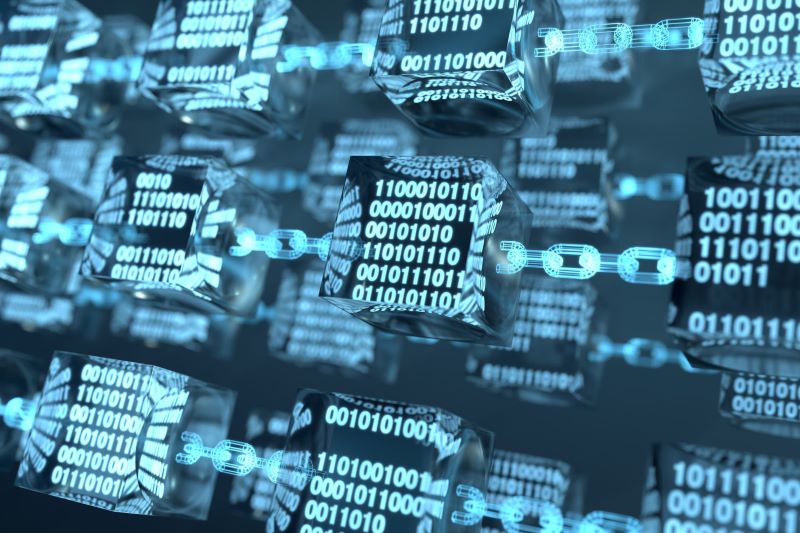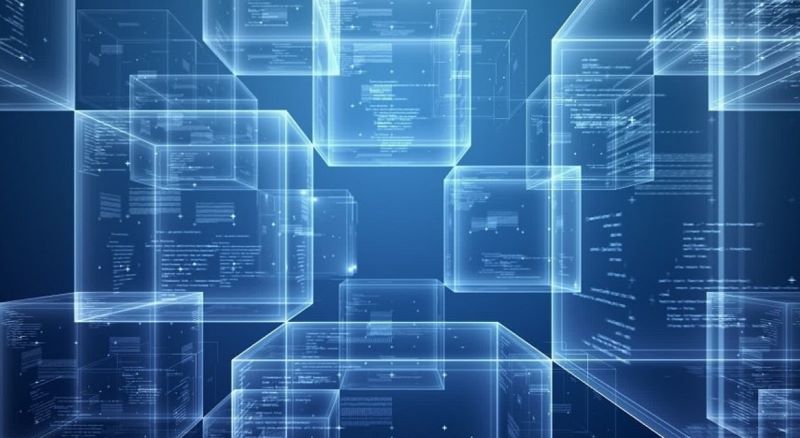What is blockchain technology and how does it work? Ever wondered how a digital ledger could be completely secure and transparent? Blockchain technology is the answer, revolutionizing industries from finance to healthcare. Let’s dive in and explore this groundbreaking innovation.
Basic Characteristics of Blockchain
To grasp What is blockchain technology and how does it work, first explore the concept and characteristics of this technology.
Blockchain (also known as a distributed ledger) is a decentralized database designed to securely, transparently, and immutably record information. Imagine blockchain as a public accounting ledger where every transaction is recorded and verified by a network of computers rather than a central organization.
Decentralized
- No Central Control: Data is not stored on a single server but is distributed across multiple computers (nodes) in the network.
- Enhanced Security: Attacking and controlling the entire system becomes significantly more difficult.
Transparent
- All Transactions are Recorded: Every transaction made on the blockchain is publicly recorded and can be traced.
- Easy Verification: Anyone can check the transaction history.
Immutable
- Data Cannot be Changed: Once data is recorded on the blockchain, it is very difficult to alter or delete.
- Increased Trust: Ensures the integrity and accuracy of the data.
This is one of the important pieces of information when mentioning what is blockchain technology and how does it work.
Secure
- Encryption: Uses strong encryption algorithms to protect data.
- Validation: Each block is validated by nodes in the network before being added to the chain.
- Difficult to Attack: Changing data in one block would require altering all subsequent blocks, which is extremely challenging to accomplish.
Transparent yet Private
- Public Data: All transactions are publicly recorded.
- Personal Information is Encrypted: To protect privacy, personal information is often encrypted.
Automation
- Smart Contracts: Allow for the automatic execution of contracts based on pre-programmed conditions.
- Minimized Human Intervention: Increases efficiency and reduces the risk of errors.
No Need for Third Parties
- Direct Transactions: Parties involved in the transaction can interact directly with each other without going through an intermediary.
- Cost Reduction: Eliminates intermediary fees.
History of the Formation and Development of Blockchain
Besides the information about what is blockchain technology and how does it work, the history of this technology is also equally important.
Blockchain technology, although emerging in recent years, has its foundational ideas rooted in earlier concepts.

Early Stage: Laying the Foundation
- 1980s: Researchers began exploring distributed systems and digital ledgers. David Chaum, a pioneering scientist, proposed the idea of blind signatures for untraceable transactions.
- Early 1990s: Stuart Haber and W. Scott Stornetta published the concept of a cryptographically secured digital ledger, establishing the groundwork for using blockchain for timestamp verification.
The Birth of Bitcoin and Blockchain
- 2008: An anonymous figure, Satoshi Nakamoto, published a paper on Bitcoin, introducing a decentralized electronic currency system utilizing blockchain technology. Bitcoin is regarded as the first and most successful application of blockchain.
- 2009: Bitcoin officially launched, marking a significant milestone in the history of blockchain technology.
Development and Expansion
- Post-2009: Blockchain quickly attracted the attention of developers and investors.
- Ethereum: In 2015, Ethereum was launched, expanding blockchain capabilities beyond currency and enabling the creation of decentralized applications (dApps).
- Other Blockchains: Numerous other blockchains were developed, each with unique features and applications.
- Diverse Applications: Blockchain is applied across various fields, including finance, logistics, real estate, healthcare, and more.
The Importance of Blockchain Technology Icon
Blockchain technology icons are essential for brand identity and recognition. Icons like Bitcoin and Ethereum help projects stand out in a crowded market, building trust and making it easier for users to recognize and connect with the brand’s values.
These icons also improve user communication and interaction. In a complex space like blockchain, icons simplify understanding by visually conveying key features and benefits. They help users quickly identify functionalities on platforms or dApps, enhancing the overall user experience.
Moreover, blockchain icons symbolize innovation and trust. They represent the revolutionary aspects of blockchain—decentralization, security, and transparency—which are key to driving adoption and acceptance in the tech and financial sectors.
In short, blockchain icons are not just for branding—they build trust, enhance user interaction, and symbolize the innovative nature of blockchain technology.
Mechanism of Blockchain Operation
Envision Blockchain as a public accounting ledger where every transaction is securely and transparently recorded.
- Creating Transactions: When a new transaction occurs (e.g., transferring money), the transaction information is sent to the network.
- Validation: Nodes in the network validate the legitimacy of the transaction.
- Adding to a Block: Validated transactions are grouped into a new block.
- Calculating the Hash: The new block is assigned a unique hash, linking it to the hash of the previous block, forming a connected chain.
- Adding the Block to the Chain: The new block is appended to the end of the chain, updating the blockchain copy across all nodes in the network.
- Consensus: To ensure consistency, nodes in the network must reach consensus on the order of the blocks. Various consensus algorithms exist, with Proof of Work (PoW) being the most common.
The information above has explained about what is blockchain technology and how does it work. So, what are the challenges of this technology?

Challenges and Opportunities of Blockchain
Blockchain technology, with its immense potential, also comes with significant challenges. These challenges and opportunities clearly reflect what is blockchain technology and how does it work at present.
Key Challenges
- Scalability: Current blockchain systems have limitations in processing a large volume of transactions in a short time, especially those using the Proof of Work consensus algorithm.
- Energy Consumption: Algorithms like Proof of Work consume a substantial amount of energy, impacting the environment.
- Regulatory Framework: The legal framework for blockchain is still incomplete in many countries, making it difficult to implement this technology in practice.
- Cybersecurity: Although blockchain is designed for security, there are still potential vulnerabilities that can be exploited by malicious actors.
- Interoperability: Different blockchains often lack compatibility with each other, complicating the integration and linking of systems.
- Human Resources: There is a shortage of high-quality personnel with in-depth knowledge of blockchain technology.

Significant Opportunities
What is blockchain technology and how does it work also significantly affects its future opportunities
- Revolutionizing Industries: Blockchain has the potential to transform the operations of various industries, from finance and banking to logistics and healthcare.
- Enhancing Transparency and Trust: Blockchain increases transparency and trust in transactions, minimizing fraud and corruption.
- Creating New Business Models: Blockchain opens up opportunities for new business models, such as the sharing economy and digital assets.
- Driving Innovation: Blockchain serves as an open technology platform that encourages innovation and creativity.
In summary, the above article has specifically addressed what is blockchain technology and how does it work. It is a groundbreaking technology that provides a new way to record and verify information. With its decentralized, transparent, and highly secure features, Blockchain Global Network believes that blockchain is creating a revolution across many fields, from finance to logistics.


RELATED POSTS
Chillchat Game Airdrop – 4 Skills for Hunting ESSENCE Tokens and Primorden NFTs
Chillchat Game Airdrop not only...
What is Data Tokenization? – The Key to Secure Data Management
What is Data Tokenization? This...
Trump Bitcoin reserve: A game changer for U.S. economy
The Trump Bitcoin reserve proposal...
What is dYdX? A deep dive into Decentralized trading
What is dYdX? It is...
What is Retroactive? Key benefits and selection criteria
Retroactive is emerging as an...
WOO Network: A powerful DeFi financial platform
WOO Network (WOO) is a...
Staying Ahead: Essential Crypto Market News Updates
Sự biến động không ngừng...
Examples of Secure Blockchain Implementations: Unveiling Industry Innovations
Examples of secure blockchain implementations...
U2U Gate listing event: A new opportunity for investors
The U2U Gate Listing event...
Guide to Hunting the Ithaca Airdrop – From Testnet to Success
From the initial steps on...
What is a decentralized exchange?
What is a decentralized exchange?...
Solaxy and Mind of Pepe – The Next Big Crypto Presales to Watch in May 2025
As the crypto market heats...
Pencils Protocol: Optimizing DeFi yields on Scroll
In the vast landscape of...
Future of On-Chain Code Audits: Revolutionizing Collaborative Cybersecurity
Enhance blockchain security with on-chain...
Cow DAO base L2 chain launch: Faster, cheaper and more scalable blockchain
The Cow DAO Base L2...
Fundamental vs technical analysis in cryptocurrency investment
Fundamental vs technical analysis plays...